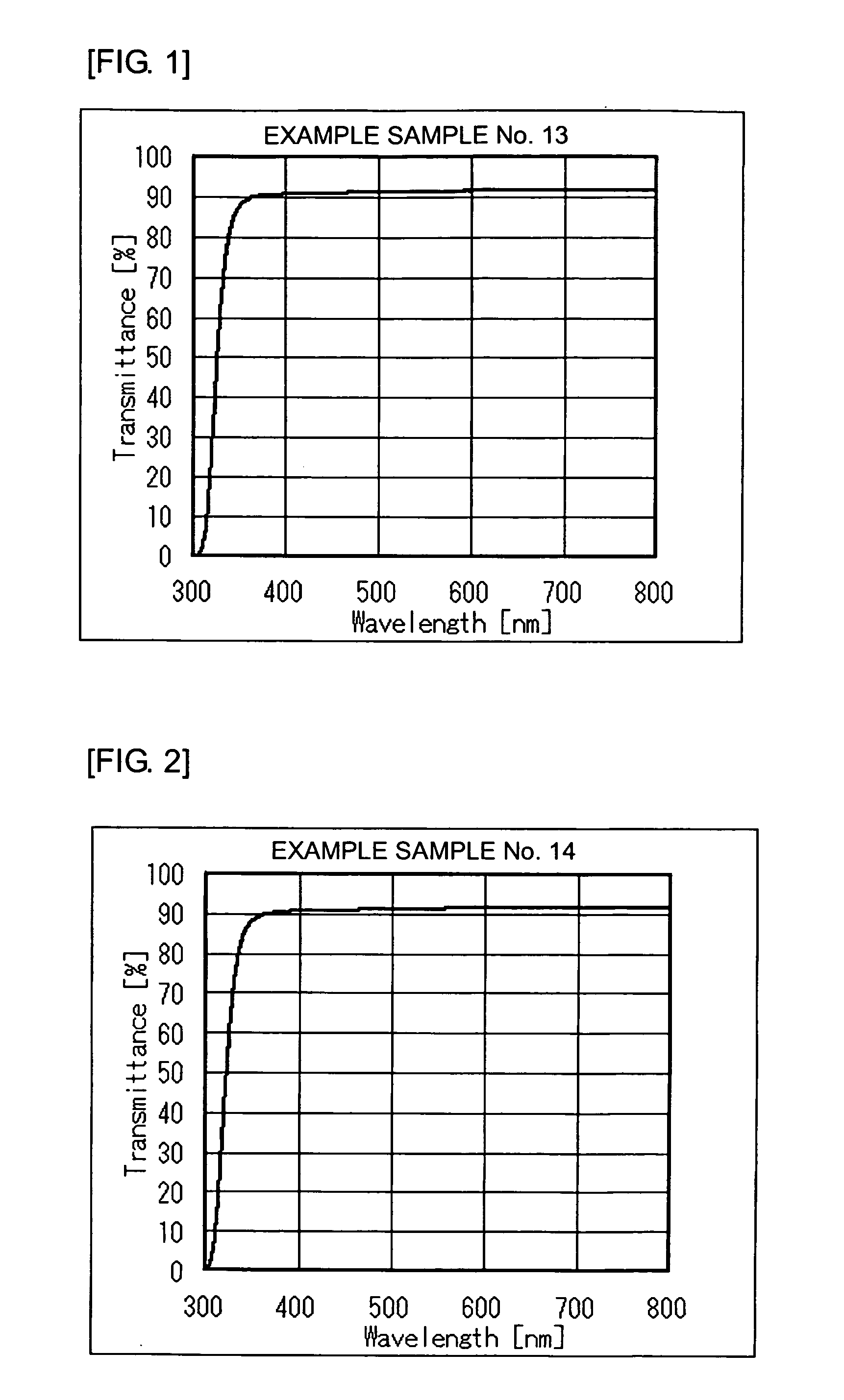Glass composition for glass fiber, glass fiber, process for producing glass fiber and composite material
a glass fiber and composite material technology, applied in glass production, glass making apparatus, glass production, etc., can solve the problems of low production efficiency of glass fibers, no composite materials as provided heretofore by combining glass fibers and organic resins, and problems to be solved, so as to achieve high production efficiency and avoid coloring. , the effect of high productivity
- Summary
- Abstract
- Description
- Claims
- Application Information
AI Technical Summary
Benefits of technology
Problems solved by technology
Method used
Image
Examples
example 1
[0097]The specifications of example compositions for glass fiber in accordance with the present invention, as well as evaluation results thereof, are shown in Tables 1 and 2. The glass compositions given in Tables 1 and 2 are expressed in % by mass in terms of oxide.
TABLE 1ExampleSample No.123456SiO265.465.667.068.668.768.4Al2O38.57.65.06.56.56.9B2O310.210.010.09.09.09.0MgO——————CaO——————SrO—0.5————BaO1.6—————ZnO0.51.51.51.51.51.5MgO + CaO + SrO + BaO + ZnO2.12.01.51.51.51.5Li2O5.24.25.02.91.81.9Na2O7.67.67.54.54.53.7K2O1.01.01.05.05.05.0Li2O + Na2O + K2O13.812.813.512.411.310.6TiO2—2.03.02.03.03.6ZrO2——————Refractive Index nd1.5121.5251.5321.5161.5141.515Abbe Number νd635957605856Amount of0.070.060.080.030.030.02Alkali Elution [JIS R3502]ΣR2O (mg)Forming104110721028119612781290Temperature Tx (° C.)Liquidus≦900≦900890≦940≦940≦940Temperature Ty (° C.)Δxy = Tx − Ty (° C.)≧141≧172≧138≧256≧338≧350Glass Fiberization◯◯◯◯◯◯ExampleSample No.789101112SiO267.570.568.574.066.069.0Al2O32.05.58....
example 2
[0121]The following illustrates a process for producing the glass composition for glass fiber in accordance with the present invention as practiced using a large-sized glass-melting furnace.
[0122]Various glass raw material components are weighed and mixed together to prepare a raw mix batch having the same composition as the sample No. 6 in Examples. This raw mix batch is continuously introduced in a glass-melting furnace by a charger for glass raw material. The introduced glass raw material is heated in the glass-melting furnace to a high temperature, 1,300° C. or above, so that it undergoes a vitrifying reaction into a molten glass.
[0123]The subsequent homogenizing operation such as stirring causes the molten glass to exit a melting process and flow into a platinum alloy bushing disposed in a forming zone of the glass-melting furnace. This bushing is provided with a number of properly temperature-controlled heat-resisting nozzles through which glass fibers are continuously withdra...
PUM
| Property | Measurement | Unit |
|---|---|---|
| Temperature | aaaaa | aaaaa |
| Temperature | aaaaa | aaaaa |
| Fraction | aaaaa | aaaaa |
Abstract
Description
Claims
Application Information
 Login to View More
Login to View More - R&D
- Intellectual Property
- Life Sciences
- Materials
- Tech Scout
- Unparalleled Data Quality
- Higher Quality Content
- 60% Fewer Hallucinations
Browse by: Latest US Patents, China's latest patents, Technical Efficacy Thesaurus, Application Domain, Technology Topic, Popular Technical Reports.
© 2025 PatSnap. All rights reserved.Legal|Privacy policy|Modern Slavery Act Transparency Statement|Sitemap|About US| Contact US: help@patsnap.com



